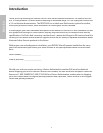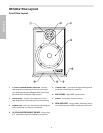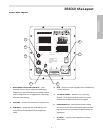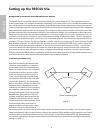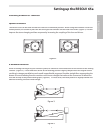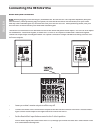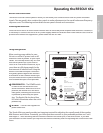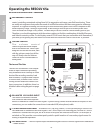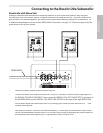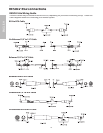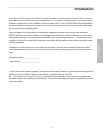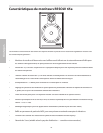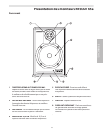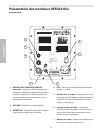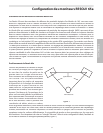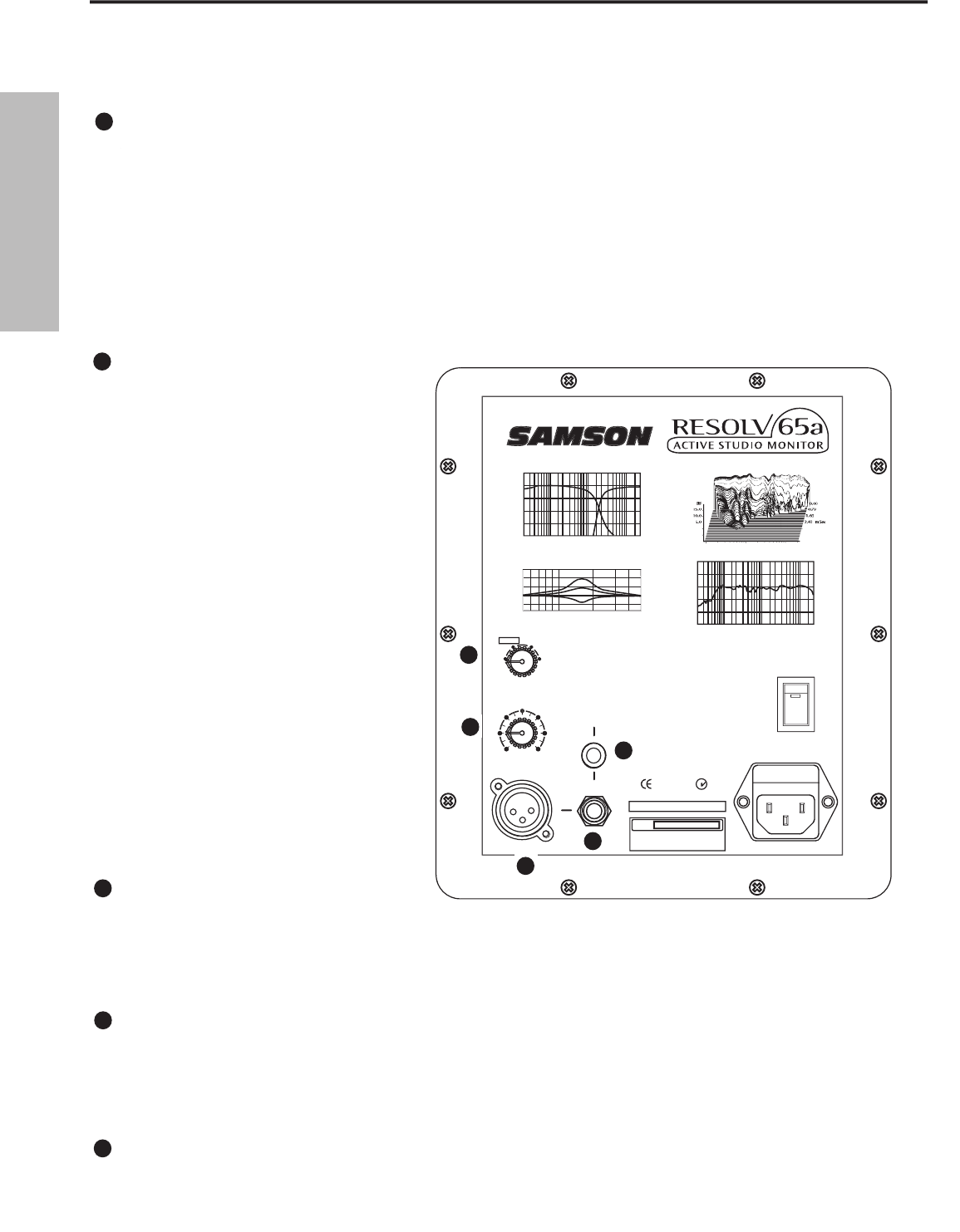
10
ENGLISH
Operating the
RESOLV 65a
RESOLV 65a Control Panel - continued
MID PRESENCE CONTROL
The four-position Mid Presence control switch is used to adjust the mid-range response (in 3dB incre-
The four-position Mid Presence control switch is used to adjust the mid-range response (in 3dB incre-
ments), providing customized voicing from hi-fi to aggressive mid-range, near-field monitoring. There
are many mix engineers that prefer the sound of near field monitors that have an aggressive midrange
response. In a typical recording, the mid range is often where many parts of the music compete for the
same frequency range. Having a slight ‘bump” is like having a microscope on the heavy traffic area.
You’ll find that the change is very subtle. The best way to set the controls is what sounds good to you.
Therefore, you should experiment with the various settings to find the combination of the Mid-Presence
and Volume controls you like. To do this play several CD’s of music that you are familiar with. Remember, if
you think you’re getting lost, the Resolv 65a is flat when the Presence control is set to the “0” position.
VOLUME CONTROL
T h e v o l u m e c o n t r o l
is
used to adjust the overall output
level of the Resolv 65a. When oper-
ating the unit for the first time, start
with the volume control set all the
way off. Slowly raise the Volume
control to reach a comfortable lis-
tening level.
The Ins and The Outs
The RESOLV 65a features a full comple-
ment of input connectors providing
easy installation with a variety of audio
devices like recording consoles, hard
disk recorders, CD players and comput-
er sound cards, to name a few. The fol-
lowing section details the Resolv 65a’s
input connectors. In addition, there is a
detailed cable-wiring diagram on page
12.
BALANCED XLR AUDIO INPUT
-
The Resolv 65a features a female
XLR connector that will accept bal-
anced or unbalanced +4dBm line level signal. If you are using a mixer that has balanced outputs on XLR
connectors, you can make the connections via standard XLR (microphone) cable.
1/4-INCH PHONE AUDIO INPUT
– A balanced TRS (Tip, Ring, Sleeve) 1/4-inch phone plug is used to con-
nect balanced or unbalanced line level signals. The 1/4-inch input is a switching jack, so when a 1/4-inch
connector is inserted into the jack, the RCA and/or XLR inputs are switched off and the 1/4-inch input is
switched on. This provides a convenient patch point for quick insertion of a secondary signal source for
testing or expanded operation.
RCA AUDIO INPUT
– The RCA input accepts unbalanced signals used to connect signals from unbalanced
–10dBV devices.
1
2
3
4
5
6
7
1
2
3
4
5
6
7
1
2
3
4
5
6
7
1
2
3
4
5
6
7
1
2
3
4
5
6
7
1
2
3
4
5
6
7
1
2
3
4
5
6
7
1
2
3
4
5
6
7
1
2
3
4
5
6
7
1
2
3
4
5
6
7



